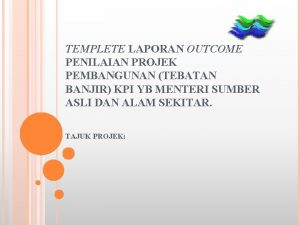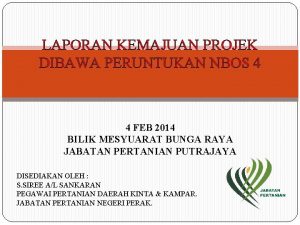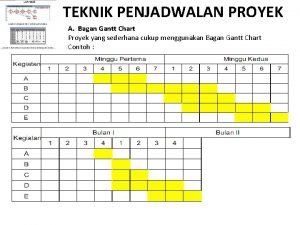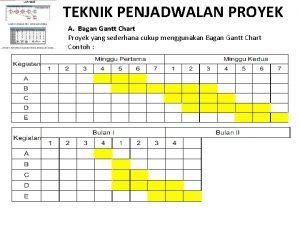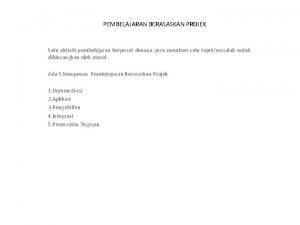MA GAME Diatami Marjouletta 1504653 Projek PPT Multimedia




















- Slides: 20

MA GAME Diatami Marjouletta 1504653 Projek PPT Multimedia

ARE YOU READY TO PLAY THE GAME

WHO INVENTED PI?

WILLIAM JONES ARYABATH A

WHICH ONE IS THE PROBABILITY DENSITY FUNCTION OF THE NORMAL DISTRIBUTION?


CHOOSE A DOOR! A B

WELCOME TO THE BONUS ROUND!! YOU CHOSE THE "A" DOOR, SO HERE IT IS YOUR BONUS ARE YOU EXCITED? ! AYE CAPTAIN! SUPER EXCITEEEEED!


Pythagoras (Circa 570 - 495 BC) Vegetarian mystical leader and number-obsessive, he owes his standing as the most famous name in maths due to a theorem about right-angled triangles, although it now appears it probably predated him. He lived in a community where numbers were venerated as much for their spiritual qualities as for their mathematical ones. His elevation of numbers as the essence of the world made him the towering primogenitor of Greek mathematics, essentially the beginning of mathematics as we know it now. And, famously, he didn't eat beans.

Hypatia (CAD 360 - 415) Women are under-represented in mathematics, yet the history of the subject is not exclusively male. Hypatia was a scholar at the library in Alexandria in the 4 th century CE. Her most valuable scientific legacy was her edited version of Euclid's The Elements, the most important Greek mathematical text, and one of the standard versions for centuries after her particularly horrific death: she was murdered by a Christian mob who stripped her naked, peeled away her flesh with broken pottery and ripped apart her limbs.

Girolamo Cardano (1501 -1576) Italian polymath for whom the term Renaissance man could have been invented. A doctor by profession, he was the author of 131 books. He was also a compulsive gambler. It was this last habit that led him to the first scientific analysis of probability. He realised he could win more on the dicing table if he expressed the likelihood of chance events using numbers. This was a revolutionary idea, and it led to probability theory, which in turn led to the birth of statistics, marketing, the insurance industry and the weather forecast.

Leonhard Euler (1707 - 1783) The most prolific mathematician of all time, publishing close to 900 books. When he went blind in his late 50 s his productivity in many areas increased. His famous formula eiπ + 1 = 0, where e is the mathematical constant sometimes known as Euler's number and i is the square root of minus one, is widely considered the most beautiful in mathematics. He later took an interest in Latin squares – grids where each row and column contains each member of a set of numbers or objects once. Without this work, we might not have had sudoku.

Carl Friedrich Gauss (1777 - 1855) Known as the prince of mathematicians, Gauss made significant contributions to most fields of 19 th century mathematics. An obsessive perfectionist, he didn't publish much of his work, preferring to rework and improve theorems first. His revolutionary discovery of non-Euclidean space (that it is mathematically consistent that parallel lines may diverge) was found in his notes after his death. During his analysis of astronomical data, he realised that measurement error produced a bell curve – and that shape is now known as a Gaussian distribution.

Georg Cantor (1845 - 1918) Of all the great mathematicians, Cantor most perfectly fulfils the (Hollywood) stereotype that a genius for maths and mental illness are somehow inextricable. Cantor's most brilliant insight was to develop a way to talk about mathematical infinity. His set theory lead to the counter-intuitive discovery that some infinities were larger than others. The result was mind-blowing. Unfortunately he suffered mental breakdowns and was frequently hospitalised. He also became fixated on proving that the works of Shakespeare were in fact written by Francis Bacon.

Paul Erdös (1913 - 1996) Erdös lived a nomadic, possession-less life, moving from university to university, from colleague's spare room to conference hotel. He rarely published alone, preferring to collaborate – writing about 1, 500 papers, with 511 collaborators, making him the second-most prolific mathematician after Euler. As a humorous tribute, an "Erdös number" is given to mathematicians according to their collaborative proximity to him: No 1 for those who have authored papers with him; No 2 for those who have authored with mathematicians with an Erdös No 1, and so on.

Terry Tao (b 1975) An Australian of Chinese heritage who lives in the US, Tao also won (and accepted) the Fields Medal in 2006. Together with Ben Green, he proved an amazing result about prime numbers – that you can find sequences of primes of any length in which every number in the sequence is a fixed distance apart. For example, the sequence 3, 7, 11 has three primes spaced 4 apart. The sequence 11, 17, 23, 29 has four primes that are 6 apart. While sequences like this of any length exist, no one has found one of more than 25 primes, since the primes by then are more than 18 digits long.

TRY AGAIN EXIT

EXIT

SEE YOU WHEN I SEE YOU
 Aryabath
Aryabath Multimedia becomes interactive multimedia when
Multimedia becomes interactive multimedia when Examples of non linear multimedia
Examples of non linear multimedia Csc 253
Csc 253 Esa multimedia.esa.int./multimedia/virtual-tour-iss
Esa multimedia.esa.int./multimedia/virtual-tour-iss Projek mekanikal politeknik
Projek mekanikal politeknik Contoh gantt chart proyek pembangunan
Contoh gantt chart proyek pembangunan Perancangan dalam pengurusan projek
Perancangan dalam pengurusan projek Contoh outcome program
Contoh outcome program Tema projek
Tema projek Laporan kemajuan projek
Laporan kemajuan projek Kitaran hayat projek
Kitaran hayat projek Contoh pentaksiran pusat
Contoh pentaksiran pusat Contoh gant chart
Contoh gant chart Contoh gantt chart projek
Contoh gantt chart projek Jenis model penghasilan projek reka bentuk
Jenis model penghasilan projek reka bentuk Penghasilan projek
Penghasilan projek Perencanaan projek
Perencanaan projek Kos penghasilan produk
Kos penghasilan produk Peringkat perancangan projek
Peringkat perancangan projek Pentaksiran berasaskan projek
Pentaksiran berasaskan projek








